Today in garden sites you can find a huge number of berry and fruit plants, about the names of many of which even experienced gardeners may not know. One of these sufficiently controversial cultivated plants includes Sunberry's berry - a sunny berry with Canadian forests. According to its origin, Sanberry is a relative of the grained crops, which in the garden and garden sections of dackets take the weed. It is because of this that such a plant has both fans and opponents. The first managed to appreciate all the most useful and valuable qualities of Sanberry berries, while opponents of culture until they consider this plant weed - perhaps for the reason that the sellers offered them a completely low-quality product in the markets.
In this article, consider the features and description of the blueberries of Sunberry, we define its main useful and healing properties. We note the important rules for the agricultural engineering of the cultivation of Canadian berries of Sanberry in a temperate climate.
Features and Morphological Description Sanberry
Sanberry is quite an amazing and controversial berry, the views on the cultivation of which are always divided into two groups. According to some, this beroda should be planted and enjoying useful qualities. Others express a negative attitude due to the fact that they most likely grown at all that culture. In fact, Sanberry's plant is a hybrid form of commonly familiar to everyone who in Russia is considered weeds and break away during the weeding of beds. Sanberry is a long-term plant of the Polenic family, which was obtained by crossing the Guinea Blueberries of the Tall and Steel European Fucking Solanum Villosum.
The natural area of \u200b\u200bthe habitat of this cult is considered the territory of Canada and North America, where in 1905 the first copy of Sunberry solar berries was obtained by the scientist breeder in American Luther Burbank. This plant is considered the closest relative of potatoes and tomato, so some external signs are similar. Sanberry people have many different names, such as blueberries Forte or Canadian blueberries. With this forest berry, it has little common, with the exception of similarities in appearance. Sometimes this culture is called the solar berry, which is the translation from English the words "Sanberry". A little less frequently in the people can meet such names as a garden toast or a fauna.
Despite the huge number of useful properties of Sanberry, this plant is still considered a fairly rare guest in the garden sites in Europe and Russia. However, gardeners increasingly began to be interested in such rare and unique cultures, which give a crop of delicious and useful berries.
Description Sanberry:
- Sanberry or Canadian blueberries are considered a perennial herbaceous plant, which is the birthplace of African countries where hybrid's generic teams are found. However, in conditions of moderate climate, Sanberry is grown as an annual plant. Although in recent years, the culture has been perfectly adapted to the conditions of cultivation in the middle strip of Russia, due to which it can perfectly carry the winter and give a good harvest.
- This hybrid representative of the elevated grows in the form of a small busta or a tree. The plant has a feature to grow quickly up and grow in breadth. You can also note a large empty shape of Kusty Sanberry.
- The plant is formed by a thick herb stem, which resembles the shoots of tomatoes or potatoes. From one central stem, a large number of meats are departed, due to which Sanberry can grow in a diameter of about 80-100 cm.
- To the height of the bush of solar berries can reach about 1-1.5 m, which is significantly higher than all other representatives of the elevation.
- Spring on shoots are blooming beautiful oblong leaves with a slightly pointed top and matte surface. Leaves have a rich green color.
- Sanberry or sunny berry can not boast of decorativeness, especially when it comes to colors.
- During his flowering, the bush is very similar to the potatoes, since both of these plants belong to one family.
- On numerous shoots, Sanberry blooms a large number of buds that are going to lush inflorescences of 10-15 pieces.
- Flowers in the plant are small, consist of snow-white petals of the oblong shape with pointed tips. Sunberry flower in shape resembles an asterisk.
- The flowering begins in approximately in June and lasts until late autumn, which makes the bush of Canadian blueberries very beautiful and bright.
- Upon completion of flowering, fruits begin to tie the fruits in the form of small berries, which in shape resemble Blueberry berries.
- Berries of Sanberry in size are similar to cherries, in diameter can average 1-2 cm.
- Fruits of saturated black, practical coal, color. Inside the flesh of a dark purple shade.
- All berries are collected in the bunches of 15-20 pieces, their location is very similar to how Cherry tomatoes grow.
- It is worth noting that the berries of Sunberry ripen long enough and the ripeness indicator is the black color of the peel of fruit.
- This plant is very unique, since the flowering and fruiting of Sanberry occurs continuously throughout the season, so both flowers and berries can be seen on the bush.
- Blueberry Forte, as they also call Sanberry, has a very high yield. From one bustle, on average, you can collect up to 2.5-3 liters of berries. It is important to remember that a good harvest can be obtained only in the first year, which is why Sanberry is often grown as an annual culture.
- The plant has good resistance to frost and heat, excellent immunity to various diseases.
The benefits and harm of Sanberry
Most often, gardeners are grown by Sanbbeury in their sites not because of decorativeness, but because of the hebodes of berries Canadian blueberries. Like any other medicinal plant, Sanberry has both positive qualities and contraindications.
The benefits of Sanberry:
- The composition of the berries of this plant includes a large amount of mineral substances: potassium, sodium, calcium, magnesium, iron. In addition, it is possible to note the large content of vitamins C and P, as well as tanning substances and pectin.
- Thanks to the content of carotene in berries, they help to remove toxins from the body during poisoning.
- The member of the manganese strengthens immunity and positively affects blood formation.
- All useful minerals and vitamins in aggregate help in the cure of the joints, in the formation of red blood cells, increase the clarity of vision and improve digestion.
- Berries have an antimicrobial property, as well as the ability to update blood and improve its composition.
- In addition, they contribute to the normalization of blood pressure and increase the elasticity of the vessels.
- Berries help rapid healing wounds.
Despite the large number of useful and healing qualities, do not forget about some contraindications of Sanberry.
- The harmarry harm, first of all, is that this is a strong allergen plant, so the berries can not be taken into the food.
- In addition, the fresh berries canadian blueberries contribute to the reduction of the uterus and can provoke miscarriages. Therefore, pregnant women are not recommended to eat them in food.
- Berries and drivers are not recommended, as they have a soothing effect.
- Berries are strictly contraindicated by children under 12 years old. At the same time, adults can be eaten by no more than 2 grinds, since the overeating can cause a strong allergic reaction.
- It is also necessary to work very carefully with the leaves and stems of Sanberry, as they contain a large number of poisonous alkaloids.
Sunberry reproduction: the most common ways
Grow a sunny yoke on its garden plot is quite simple. For the reproduction of this culture, only one method is suitable - seed growing. If this healing berry is already growing on your site, you can use the self-sowing, since after fiftever the seeds of Sanberry can germinate. However, this is rarely happening with great difficulty, which is associated with the poor site of the planting material. Consider the basic rules and important nuances of growing plants from seeds.
Seed breeding Sanberry
- Experienced gardeners do not recommend landing Sunberry seeds immediately into open ground, since the growing period of this plant has a rather long and seedlings simply do not have time to grow and give a harvest in a temperate climate. That is why it is recommended to grow the Canadian blueberry Sanberry seedlings.
- Seed seedlings need to be sung in about the middle or late February, this process can be carried out in March.
- Be sure to prepare the landing material before planting, to increase the percentage of his gentlemen.
- Sanberry seeds have a very dense shell, which prevents the rapid germination of the planting material. Therefore, before sowing, it is recommended to carefully cut the seeds or pierce them with a needle in such a way as not to damage the kernel itself.
- After that, the seeds must be soaked in a weak manganese solution to accelerate germination. To do this, take the appropriate container and fill it with a manganese diluted in water, and then place the seeds in a solution of approximately 30-40 minutes. Next, the planting material is recommended to rinse under running water and dry.
- After such procedures, seeds can be seen in the boxes, and you can pre-give them time to proceed. To do this, they are placed in a wet cloth or a paper napkin, which in turn is put on a sunny place, for example, on the windowsill. After about a couple of days, Sunberry seeds to scream and can be planted for seedlings.
- While the seeds are gluable, draw up the preparation of the container for planting and soil mixture. You can take any box or container, any plastic banks and containers are suitable.
- At the bottom of the selected container, be sure to pour the drainage layer, as the seeds with the moisture can start garn.
- Next, when the soil is selected, it is worth excluding the use of peat.
- Place the soil in the container and slightly moisten it, after which you can proceed to the direct sowing of Sanberry seeds. It is important to remember that the seeds must be plugged with a maximum of 0.5 cm, otherwise the planting material can be dried.
- Capacity with seeds must be put on a sunny place, close it with glass or film is not necessary. It is enough to maintain an optimal temperature in the room within 22-24 degrees and regularly water the soil - on average 3-4 times a week.
- Sanberry seedlings germinate long enough, usually this process takes about 3 months.
- After the appearance of 2-3 leaves, seedlings are in separate glasses or a pot. It is advisable to do this by transshipment.
- In open soil, young plants are recommended to plant when they have already formed 5-6 strong leaves. This is usually happening at the end of May or in early June.
Sanberry Landing into Outdoor Soil - Phased Instructions
Landing Canadian blueberries in the open ground is not much difficult, since this plant pleases its unpretentiousness. However, to obtain a large harvest of healing berries, it is recommended to carefully comply with all stages of preparation for landing, i.e. Competently prepare or acquire landing material, as well as find the place ideally suitable for this plant. Consider all the basic rules for the stages of the preparation and landing of Sanberry in open ground.
Stage 1. Choice and purchase of Sanberry planting material
- First of all, each gardener needs to take care of the purchase of landing material. In this case, difficulties may arise, since Sanberry is still considered a rather rare plant in Russia.
- In addition, the likelihood of buying the landing material is not Sanberry, but the usual wild fault. Therefore, it is recommended to buy only in specialized garden centers and nurseries who are professionally engaged in breeding various plants.
- More often in garden stores sold precisely Sunberry seeds, seedlings and seedlings can be found much less often.
- When choosing varieties, there should be no problems, as Sanberry is the only form and variety of this hybrid culture.
- Before buying Sanberry seeds, carefully check the manufacturer on packaging and shelf life.
- It is best to buy the planting material of this plant at gardeners and manufacturers who specialize in the cultivation of this particular culture, since you will avoid risk to buy a wrong culture.
- If you buy this healing plant in the form of seedlings in the nursery or in proven gardeners, then be sure to pay attention to the soil in containers or pots - it should be clean and moistened. In addition, it is best to acquire seedlings in individual pots, it's easier to transplanses them into the ground, without fearing to damage the roots.
Stage 2. Selection of Places for landing Sanberry
- Further, on its site it is necessary to choose the most suitable place for landing, which will contribute to obtaining a large harvest of healing berries.
- Sanberry prefers to grow on an outdoor, very light and warm plot. At the same time, the selected place must be protected from strong wind and drafts.
- It is important to choose a place for landing Sedbbery seedlings, considering precursors, i.e. Plants that grew up in this area last year. It is recommended to plant a Canadian blueberry after zucchini or cucumbers. At the same time, it is not worth landing plants near or after potatoes, tomatoes or peppers - Sanberry begin to dying, bluntly bloom.
- Many gardeners grow Sanberry in a garden between other vegetable crops.
Stage 3. Choice and soil preparation for landing Sanberry
- Sanberry loves to grow on lungs and loose soils, where moisture is not stored and a sufficient influx of oxygen is provided to the roots. In terms of quality and composition of the soil, this plant is considered relatively unpretentious.
- This culture does not make an acidic soil, so you should not land seedlings in peat. If there is no other option, then it is necessary to add dolomite flour or lime before planting the ground.
- In addition, on its site it is recommended to pick a slightly sublime place where there is no stagnation of moisture, which can be destructive to affect the plant.
- Immediately before boarding the selected soil section, it is necessary to thoroughly and explode, at the same time add organic fertilizers to it. This will help get a good harvest of useful berries.
Stage 4. Sanberry Planting Process in Open Soil
- In the open ground, seedlings or Saplings Sanberry are planted when completely passes the threat of return freezers. Usually this period falls at the end of May or the beginning of June.
- The selected area is once again well levels rake, after which the landing wells are prepared on it. Their size must correspond to the size of the root system of Sanberry along with an earthy room. When preparing the wells, it is important to take into account the distance between individual plants and rows. Mandatory between the wells, retreat approximately 80-100 cm, as in the future bushes grow very quickly and will interfere with each other. If you are sitting down Sanberry somewhat next, then leave the distance in the arses of approximately 80 cm.
- Each well before planting should be abundantly shedding with water and wait until it is absorbed. After that, many gardeners are recommended on the bottom of the landing holes to pour some pure river sand or small gravel, which will act as a drainage.
- Before falling into the ground, paint seedlings in pots for better extract. It is recommended to plant the transshipment method so as not to damage the root system.
- Gently remove the seedling together with an earthen room and place it in the prepared hole, then sprinkle it with soil.
- After landing, all young plants are abundantly watered with water, and the rolling round is mulched by manure to prevent moisture evaporation.
Sanberry Growing Agrotechnology: Secrets and Nuances of Care
Sanberry's care is no difficulty, as this plant has excellent quality - unpretentious with growing and care. Therefore, to plant and grow in your garden or in a garden, a unique plant of Canadian blueberries with useful berries forces even inexperienced gardener.
- Watering. Sanberry is considered a drought-resistant culture that does not need abundant irrigation. Watering bushes need irrigation when it is hot weather and there is no rain for a long time. You can navigate to the top layer of the soil - if it is dry, it's time to water.
- Loosening and mulching. After each watering, it is necessary to neatly loosen the soil and remove weeds. To prevent evaporation of moisture, a rolling round is recommended to mulch. In this case, you can use humus.
- Feeding With proper landing, it is necessary to add to the soil of manure. In the future, it is possible to feed the culture three times over the season of vegetation, making both complex mineral fertilizers and infusions of the cowboy and garden chains from weeds, for example, from nettle.
- Trimming and gap. Experienced gardeners approximately in the middle of flowering are recommended to partially delete new buds so that the plant will send all the forces to the already existing. This is necessary to obtain a crop of large berries. After ripening the fruits, the branches begin to tear down to the ground, so it is necessary to take care of the backups and garter.
- Fighting pests and diseases. Sanberry has excellent immunity to various diseases and pests, so there will be no problems with this gardeners.
- Harvesting. Collect the berries of Sunberry or Garden Fucking is needed after their full ripening, which falls on September. They do not differ in any particular, so many do not eat them fresh, but are used to prepare jam or simply squeeze juice from them and mix with juice orange or lemon.
Sanberry - Reviews
Today, on the Internet, you can find gardener reviews that have already tried to grow up at our site this is an amazing plant:
- Vladimir, Rostov. Long did not resolve to buy this plant, I was afraid to get to the wilder. But eventually trusted a proven supplier and in the end, Sanberry is growing in my area for the second year - really sunny berry with just incredibly useful qualities.
- Oksana, Bryansk. Accidentally, a bag with seeds of Gardener was caught, I decided to plant and see what would work out. Culture is simply unique, does not require any care, it gives just huge crops. From one bush, we had to gather up to 3 kg of ripe and useful berries. I definitely recommend trying to grow in my garden.
Sanberry - Photo
Sanberry or garden isastor - still rare guest in garden sites of our gardeners. However, gradually it begins to cause interest from Flora lovers with his decorative qualities and useful berries, especially since planting and care for the plant is extremely simple.

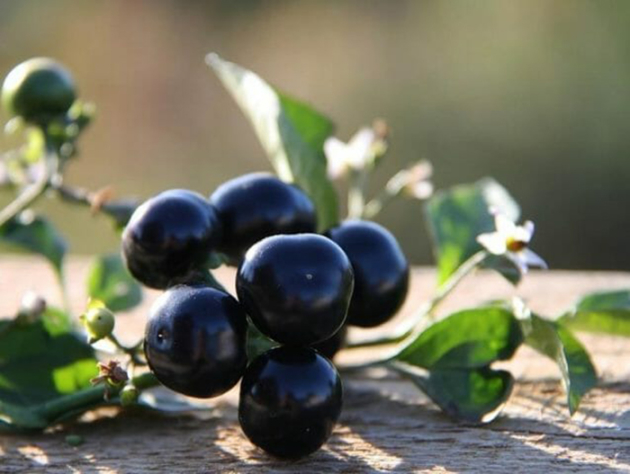
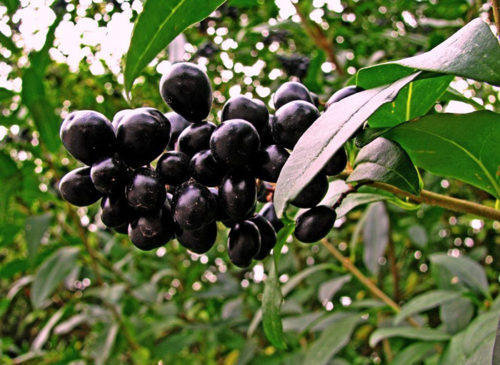
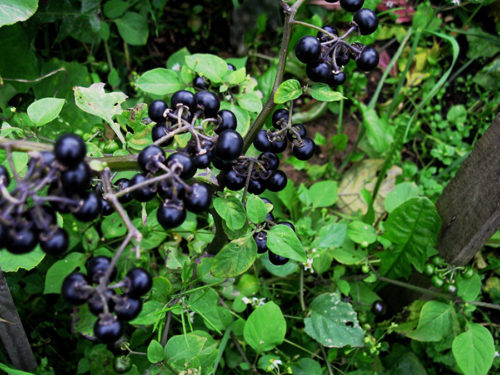
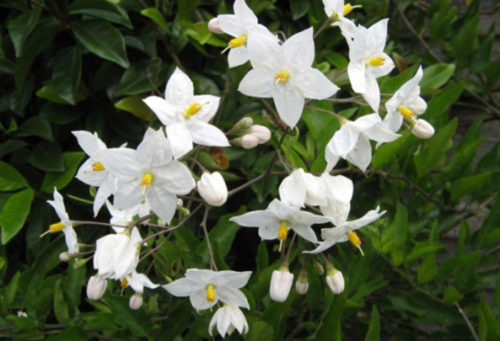
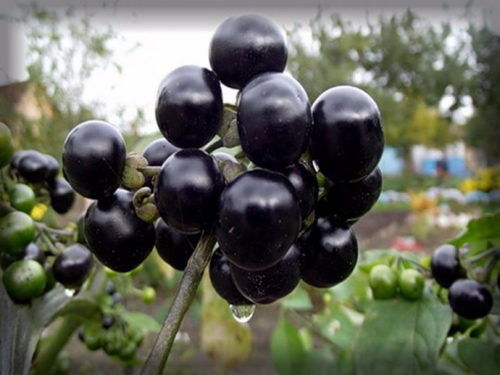
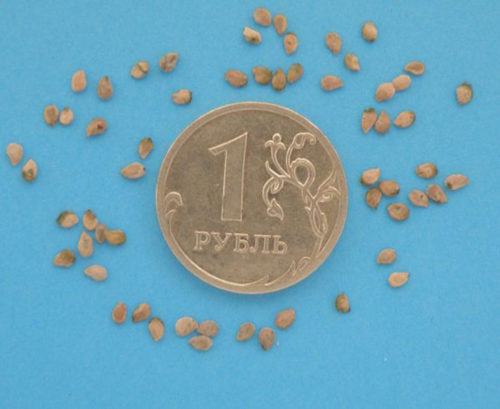
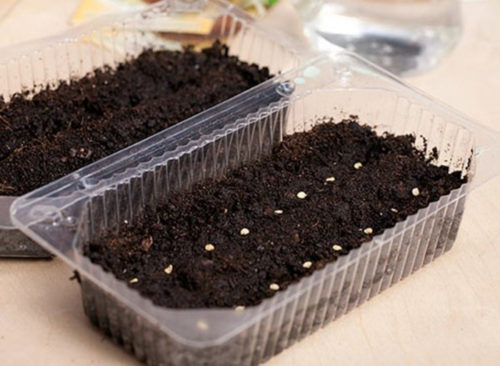
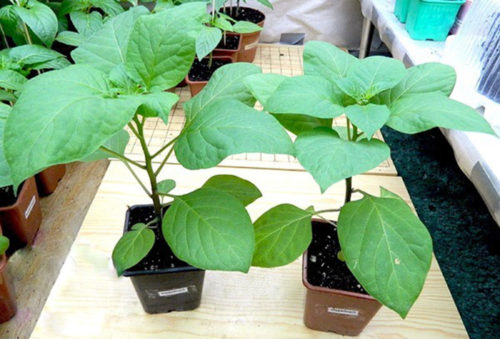

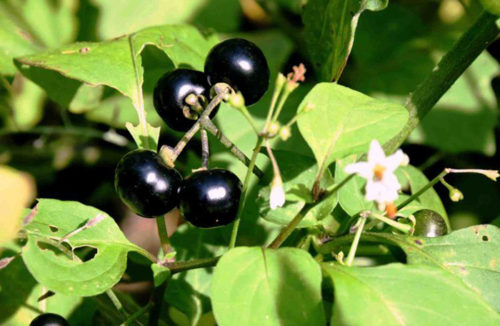

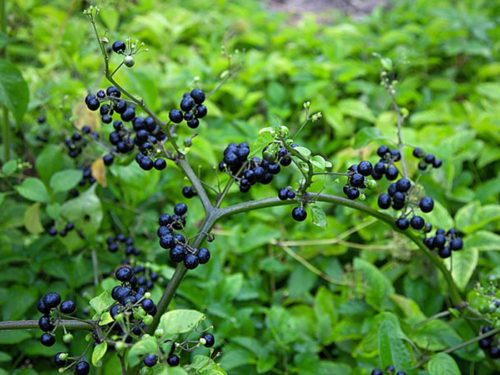
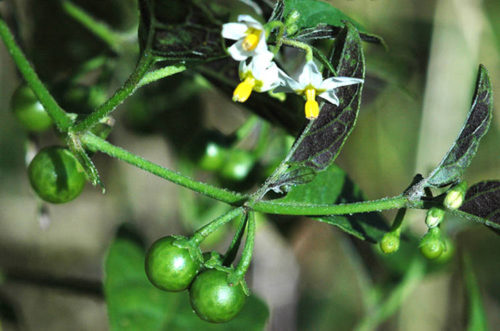
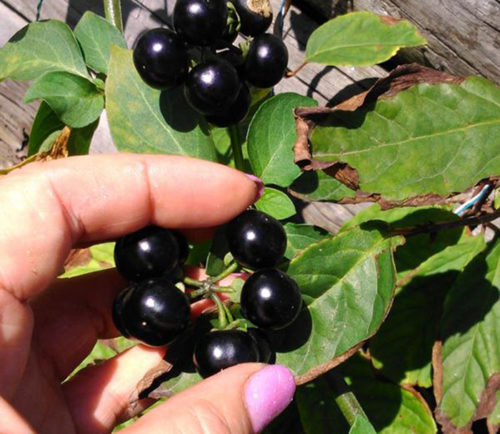
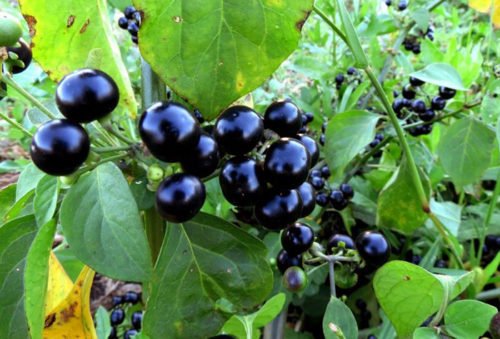












 Start a discussion ...
Start a discussion ...